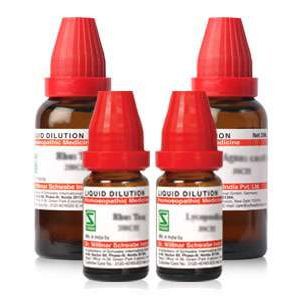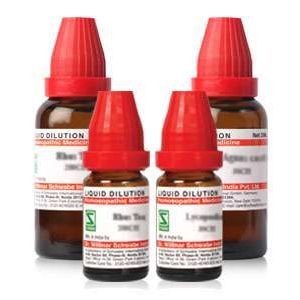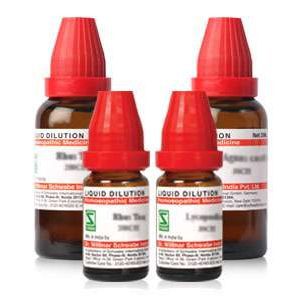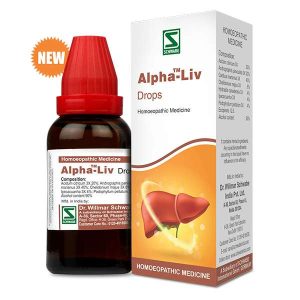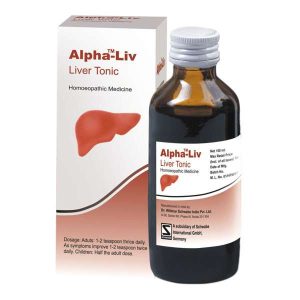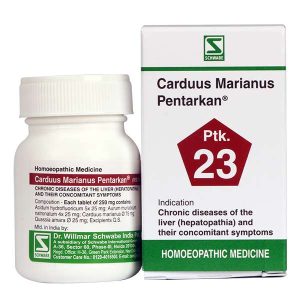
Four Stages of Liver Disease & Its Cure With Homeopathy
- Dr. P T Ponmani
- July 20, 2022
- No Comments

The liver is the largest organ that plays a vital role in the digestion and metabolism of the body. It has various essential functions such as detoxifying the blood, digestion, drug metabolism, fighting infections, etc. In addition, the liver can repair and regenerate its cells for its proper functioning. Since the liver filters the toxins and drugs and combats the conditions, it is easily prone to infectious and inflammatory diseases. The liver and its functions are restorable up to an extent due to its regenerative and healing ability. But when the damage is too much to handle, it may lead to liver failure.
Liver diseases refer to conditions that affect the liver tissues and cause damage. Many types of liver disease affect the liver cells and their functions. Liver diseases progress gradually and consistently. Early diagnosis can reverse the cell damage and treat the problem. If not, the injuries become progressively worse and irreversible over time.
Causes of Liver Disease
Some of the common causes that lead to liver diseases are:
- Chronic alcohol or drug abuse.
- Obesity or malnutrition.
- Fat accumulation in the liver (non-alcoholic fatty liver disease)
- Certain drugs and medications.
- Inherited or genetic disorders such as Wilson’s disease and hemochromatosis, alpha-1 antitrypsin deficiency, etc.
- Alcoholic fatty liver due to chronic consumption of alcohol.
- Non-alcoholic fatty liver disease due to consumption of a diet rich in fat.
- Viral infections like Hepatitis A, Hepatitis B, and Hepatitis C.
- Autoimmune disorders include autoimmune hepatitis, primary biliary cholangitis, and primary sclerosing cholangitis.
- Cancer and other abnormal cysts or growths.
- Unhealthy lifestyle and unhealthy diet.
- Liver diseases as a result of exposure to drugs or toxic chemicals.
The four Stages of Liver Disease
Liver diseases can be acute or chronic. But most liver diseases progress in the same manner despite the cause and severity. The liver undergoes four stages of changes when it is affected or diseased. The changes may progress gradually or suddenly and from mild to severe. Most of the liver diseases damages the liver in similar manner, and the progression of liver disease also looks the same regardless of the underlying condition.
Stage 1
The first stage of liver disease is inflammation. Once the liver is affected, the liver cells get inflamed, and the liver becomes swollen. Inflammation is a natural response to the injury. Most of the time, liver inflammation or hepatitis occurs when there are too much of toxins in the blood that is beyond the capacity of the liver to handle.
The person may experience pain in the upper right abdominal region. If diagnosed at this stage, the condition may be treatable because the liver has the capacity to repair and regenerate in the early stages of liver disease. Since the early stages are mostly asymptomatic, it goes undiagnosed and untreated, leading to further damage.
Stage 2
The next stage of progress in liver disease is fibrosis, where undiagnosed and untreated liver inflammation leads to the formation of scar tissues in place of healthy liver tissues. Fibrosis affects the blood flow and the functions of the liver. The liver loses the ability to restore its cells once scarred, leading to the necrosis of cells. But still, there are chances of repair and treatment through lifestyle and medical interventions. Along with scarring, toxins and fat might accumulate, which further affects its functioning capacity. This stage of liver disease is also mostly asymptomatic.
Also Read Treatment of Fatty Liver Diseases - Schwabe India
Stage 3
Cirrhosis is the next stage of liver disease. Cirrhosis is a condition where severe, irreversible damage and liver scarring happen. This transition from fibrosis to cirrhosis takes place very gradually. But once cirrhosis occurs, the scarring is complete and irreversible. In this stage, the symptoms are more noticeable. The patient may experience pain and discomfort in the abdomen, tenderness in the liver region, loss of appetite, weakness, fluid retention in the abdominal cavities, jaundice, and itching of the skin. This condition is challenging to treat.
Stage 4
Liver failure or End-stage liver disease is the last stage of liver disease. Progressive scarring or cirrhosis leads to liver failure. Liver failure can be acute or chronic. Acute liver failure happens suddenly and within a short duration of 48-72 hours. It is caused by any infections associated with ascites and hepatic encephalopathy. Chronic liver failure occurs gradually and is mainly caused by alcoholism. In the case of liver failure, the symptoms are very severe such as diarrhea, nausea, vomiting, weight loss, and loss of appetite. Sometimes the mental capacity of the person also gets affected, leading to confusion and disorientation.
At this stage, the disease’s progress is irreversible and generally fatal. Getting a liver transplant might be the only option available to save the person when it happens.
What are the symptoms of liver disease?
There are many types of liver diseases that depend upon causative factors. Some types of liver disease are asymptomatic such as non-alcoholic fatty liver, while most liver diseases have a few common symptoms. They are:
- Jaundice
- Pain and tenderness in the liver region
- Nausea and vomiting
- Swelling in the legs and ankles
- Itching of the skin
- Dark-coloured urine
- Pale coloured stools
- Chronic fatigue
- Loss of appetite
- Tendency to bruise easily
Risk factors for liver diseases
- Factors which increase the risk of developing liver disease include:
- Chronic or excessive alcohol consumption
- Obesity
- Type 2 diabetes
- Sharing used needles may transfer infections
- Exposure to an infected person’s blood or body fluids
- Unprotected sex
- Exposure to certain chemicals and toxins
- Family history of liver disease
Complications of liver diseases
The complications depend on the cause of the liver disease. Chronic and untreated liver disease may progress to liver failure or end-stage liver disease.
Liver cancer can be due to a liver disease called primary liver cancer or as a result of metastasis from other organs when it is called secondary liver cancer. It may develop at any point in time depending on the type, but people with cirrhosis are more at risk of contracting liver cancer. Once the cancer cells have spread into the liver, they cannot be reversed or treated successfully. A liver transplant may be the last resort to save a person.
Also Read Homeopathic Medicine for Fatty Liver
How is a liver disease diagnosed?
Some of the tests to identify the cause and to diagnose a liver disease accurately are:
A liver function test to determine the functioning capacity of the liver, including the levels of enzymes, prothrombin time test, etc.
Imaging tests include an ultrasound, CT scan, and MRI to look for signs of fat deposits, tissue damage, scarring, or tumours in the liver.
A liver biopsy removes a small piece of liver tissue and analyzes the tissue for signs of infections, tumours, or cancers.
Prevention and management of liver diseases
Early intervention, along with proper treatment and some lifestyle changes, will help people at risk of liver disease avoid severe liver damage and prevent liver failure. Some of the highly recommended preventive measures are:
- Avoiding or limiting alcohol
- Getting regular exercise
- Limiting consumption of red meat
- Practising safe sex and avoiding sharing needles
- Getting vaccinated to prevent hepatitis A and B
- Eating a proper well-balanced diet
- Maintaining a healthy weight
- Practising proper hand hygiene
- Avoiding sharing personal items such as toothbrushes, towels and razors
- Avoid tattooing and body piercing without proper hygienic measures
- Avoid taking medications unnecessarily unless advised by the physician. Likewise, avoid self-medicating and OTC medicines
- Wearing a mask and protective gloves when working with insecticides, fungicides, paint, and other toxic chemicals.
- Maintaining a healthy weight
- Adopting a healthy lifestyle
- Getting regular health check-ups
Homeopathic Medicines for Liver diseases
There are various homeopathic medicines for treating liver diseases. Many physicians’ highly recommended homeopathic medicines for treating liver problems are Chelidonium, Carduus marianus, Natrum sulphuricum, Arsenicum album, Phosphorus, Picricum Acidum, Lachesis, etc.
- Chelidonium is an excellent remedy for liver infections, hepatitis, gallstones, and jaundice.
- Carduus marianus is excellent medicine for liver cirrhosis with dropsical conditions.
- Natrum sulphuricum helps treat liver problems like jaundice, hepatitis, and other biliary diseases.
- Arsenic album and Phosphorus are helpful in treating liver problems such as cirrhosis and hepatitis.
- Picric Acidum and Lachesis are useful for treating liver problems such as fatty liver.
- Chionanthus and Crotalus horridus are some of the best homoeopathic medicines for liver problems such as jaundice.
- Berberis vulgaris and Chionanthus are useful in treating gallstones.
- Bryonia is pre-eminently a gastro-hepatic remedy and has pain in the right shoulder, giddiness, skin, and eyes slightly yellow.
- Mercurius is a homeopathic medicine for liver cirrhosis, hepatomegaly, and jaundice.
- Podophyllum is a principal remedy in liver affections. It is indicated in the torpid or chronically congested liver.
- Digitalis is a homeopathic medicine useful in treating jaundice due to heart diseases. It is indicated in the case of severe jaundice where the pulse is irregular and intermittent with rapid prostration of the strength.
- Myrica is an important liver for liver cirrhosis.
- Nux vomica is especially indicated for liver affections due to chronic alcoholism, eating highly seasoned food, abuse of quinine, and purgatives. It is one of the best homeopathic remedies for cirrhosis of the liver.
- Lycopodium is indicated for chronic congestion of the liver with jaundice.
- Carduus marianus is one of the best liver remedies since its action is centred around the liver and portal system. Carduus marianus is a beneficial homeopathic medicine for liver cirrhosis from the abuse of alcoholic beverages. The presence of “liver spots is a special indication for the remedy.
- Phosphorus is the remedy for fatty degeneration of the liver and cirrhosis.
-
 Chelidonium majus CHSale Product on sale
Chelidonium majus CHSale Product on sale₹100.00₹82.00 -
 Carduus marianus CHSale Product on sale
Carduus marianus CHSale Product on sale₹100.00₹82.00 -
 Arsenicum album CHSale Product on sale
Arsenicum album CHSale Product on sale₹100.00₹82.00Rated 5.00 out of 5 based on 10 customer ratings -
 Natrum sulphuricumSale Product on sale
Natrum sulphuricumSale Product on sale₹110.00₹90.20Rated 5.00 out of 5 based on 2 customer ratings
Some special products to treat, manage and maintain a healthy liver are Schwabe India’s Alpha-Liv Tonic, Alpha-Liv drops, Carduus Marianus Pentarkan, etc. It is kindly advised to take any homeopathic medicines or products under the guidance of a homeopathic physician.
-
 Alpha-Liv-DropsSale Product on sale
Alpha-Liv-DropsSale Product on sale₹130.00₹106.60Rated 5.00 out of 5 based on 1 customer rating -
 Alpha-LivSale Product on sale
Alpha-LivSale Product on sale₹125.00₹102.50Rated 4.70 out of 5 based on 10 customer ratings -
 Carduus Marianus PentarkanSale Product on sale
Carduus Marianus PentarkanSale Product on sale₹185.00₹151.70Rated 4.43 out of 5 based on 7 customer ratings
Conclusion
The liver is the largest organ in the human body. It helps in digestion, metabolism, and removal of toxins. There are many kinds of liver diseases that depend on the causative factor. Liver diseases develop in four stages, of which the first two stages are reversible and can be treated easily. The following two stages cause severe irreversible damage, are difficult to treat and may need a transplant. Tests such as imaging tests and liver function tests can help identify liver damage and diagnose liver diseases.
Early diagnosis and intervention with proper medications and lifestyle changes can help treat and manage liver diseases.

























